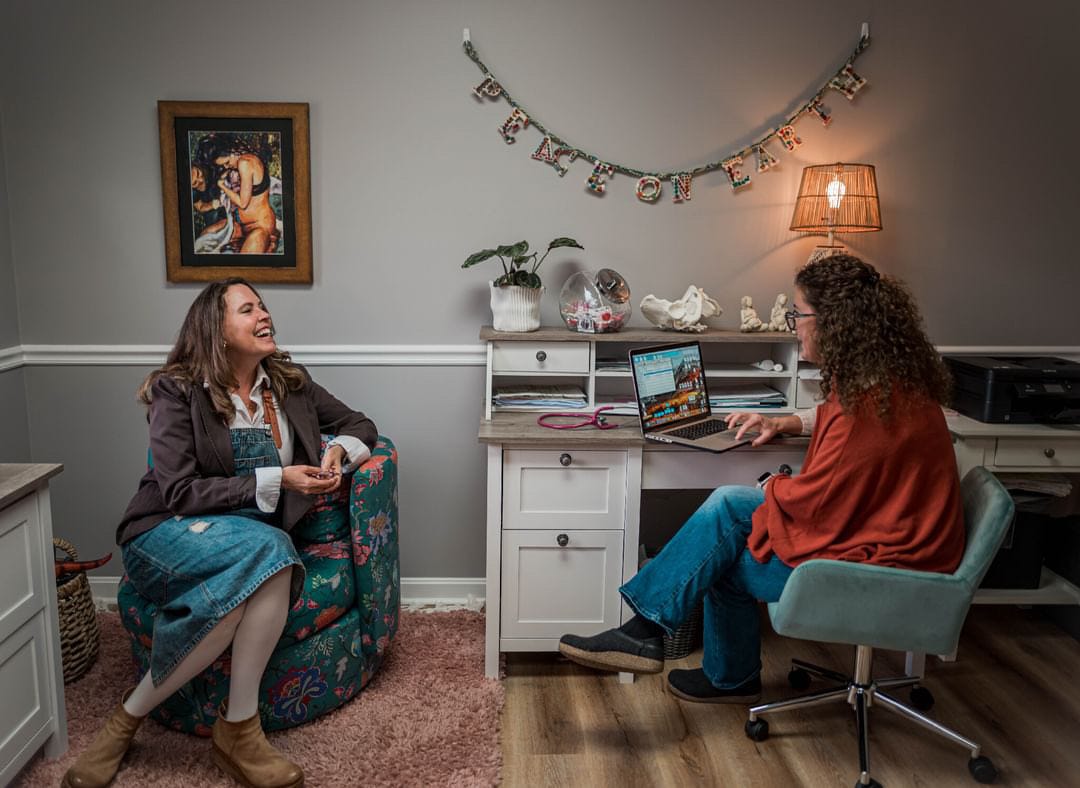Prenatal Testing or Screening? Understanding the Shift from NIPT to NIPS
Everything You Need to Know Before Your Appointment
We know how overwhelming prenatal tests can feel—it’s a lot to take in, and the thought of learning about potential health issues can be scary. There are so many misconceptions about this topic, and now there’s a new layer to understand: “prenatal testing” is now more commonly referred to as "prenatal screening”. To help you (and ourselves!) understand more, we turned to some of the most trusted midwives in our community: Hilary Biesecker, CNM, APRN and Heather Swartz, CNM, APRN, co-founders of Loudoun Homebirth and Healthcare. Keep reading to find out what we learned!
But first: why are we discussing this now? The shift in terminology from testing to screening has happened as medical professionals recognized the distinction between screening and diagnostic testing. Screening tests, like non-invasive prenatal screening (NIPS), assess the risk of potential conditions but do not provide a definitive diagnosis, whereas diagnostic tests, such as amniocentesis, confirm or rule out conditions. The change in language reflects a more accurate understanding of what these tests provide—probabilities rather than certainties—aiming to better inform expectant parents and manage expectations.
Obviously, you love your baby and want the best for them. These protocols are here to give you important insights into your baby’s health, helping you understand if there’s anything you might need to be prepared for. The more information you have, the more confident you’ll feel about the journey ahead. Let’s get to the info you need to know:
Q: What caused the name change from Non-Invasive Prenatal Testing (NIPT) to Non-Invasive Prenatal Screening (NIPS)?
A: Non-invasive prenatal testing (NIPT) and non-invasive prenatal screening (NIPS) have always been synonymous. Initially, labs and their sales reps marketed it as "testing" for genetic disorders through a simple blood draw. We always perform bloodwork at the initial prenatal visit, so it was easy to add a couple of vials to test for genetic disorders and reveal the baby’s sex as early as 10 weeks. Many parents opted for this screening just to find out the sex of their baby, which came as part of a package deal with genetic screening.
Interestingly, this technology has become more accessible, and now anyone can get a do-it-yourself kit just to find out the fetal sex. Over time, we’ve realized that "screening" is a more appropriate term than "testing," as these screens provide probabilities rather than definite diagnoses.
Q: What is the difference between testing and screening?
A: For most people, it’s all about perception. Screening identifies if someone is at risk for a particular condition and assesses the level of that risk. A diagnostic test, on the other hand, gives a definitive diagnosis. For example, NIPS might indicate a 58% chance that your baby has a specific genetic abnormality, like Trisomy 21 (Down Syndrome). But to confirm this, you would need a diagnostic test like amniocentesis.
That’s why it’s important [that we] counsel clients that genetic screens are just that—screens. There are risks and benefits to performing them, and it’s vital to consider whether knowing this information would cause or relieve stress. That answer will vary from person to person.
Q: Is there a difference in which chromosomal abnormalities are being tested for with the change to NIPS?
A: No, the chromosomal abnormalities being screened for haven’t changed. However, over the years, we’ve added many more conditions that can now be screened. We also offer carrier screenings to both parents, which may influence their decision to proceed with NIPS based on their results.
Q: Will NIPS provide parents with different information than they would receive from other methods, like a 12-week ultrasound?
A: Yes and no. NIPS can statistically rule out certain conditions. For example, before screening, your baby might have a 1 in 200 chance of a particular condition, but after screening, that chance could drop to 1 in 10,000, which is reassuring. On the other hand, a 12-week ultrasound assesses certain structures and can also suggest that the baby is healthy, which is also reassuring.
However, even if an ultrasound looks normal, it doesn’t guarantee the baby is free of genetic abnormalities. Just like with NIPS, if something concerning shows up on the ultrasound, further testing, such as amniocentesis, would be needed for a definitive diagnosis. The key takeaway is that both NIPS and ultrasounds can provide useful information, but neither is a guarantee of a perfectly healthy baby without follow-up diagnostic tests.
We’re so grateful to the Loudoun Homebirth and Healthcare team for answering our questions. Want to know more? As always, your provider is the best resource for questions related to your unique situation.
Living in or near Loudoun County, VA and want to know more about the midwives? Check out their website and follow them on Instagram and Facebook.
And no matter where you are in the world, Like A Sister can help you welcome your baby feeling more joyful and confident. Email us at likeasistercontact@gmail.com to book our parent prep and baby feeding classes and 1:1 support packages and follow us on Instagram and Facebook for tips and resources.



I think this is so important. I learned through prenatal testing that I'm a carrier for a rare muscular dystrophy disorder, which the doctor hadn't seen in ten years. It's common in people from Ashkenazi Jewish descent, which describes me. I think prenatal testing is important.